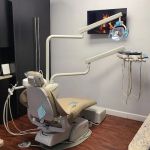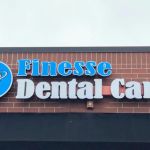Signs of Tooth Infection and Abscess: How to Recognize and Treat Them
- 1. Introduction to Tooth Infections and Abscesses
- 2. Common Signs of Tooth Infection and Abscess
- 3. Causes and Risk Factors for Tooth Infections
- 4. Treatment Options for Tooth Infections and Abscesses
- 5. How to Prevent Tooth Infections and Abscesses
- 6. When to Seek Professional Dental Help
1. Introduction to Tooth Infections and Abscesses
Tooth infections and abscesses are common dental problems that can cause severe pain and discomfort. These issues typically occur when bacteria invade the tooth, leading to inflammation, swelling, and sometimes, pus formation. A tooth abscess, in particular, is a localized infection that forms around the root or in the gum tissue, which can result in serious health complications if left untreated.
Recognizing the signs of tooth infection early is crucial for preventing more severe problems. In this article, we will discuss the symptoms of tooth infections and abscesses, explore their causes, and highlight the best treatment options available. We will also share helpful tips on how to prevent these conditions and when it’s time to seek professional dental care.
2. Common Signs of Tooth Infection and Abscess
Identifying a tooth infection or abscess early can prevent the condition from worsening and causing long-term damage. Here are some common signs and symptoms to look out for:
- Severe Toothache: One of the first signs of a tooth infection is a sharp, throbbing pain that can radiate to the jaw, ear, or neck. The pain often becomes worse when chewing or touching the affected tooth.
- Swelling and Redness: An abscessed tooth often causes visible swelling and redness in the gums around the infected tooth. This can also lead to the formation of a visible pimple-like bump on the gums, which may drain pus.
- Bad Taste or Odor: A foul taste in the mouth or a constant bad odor may occur if the abscess drains pus. This is a sign that the infection is spreading and needs immediate attention.
- Fever: An infection in the tooth can lead to a fever, which is the body’s natural response to infection. This is a sign that the infection is spreading beyond the tooth.
- Sensitivity to Temperature and Pressure: People with tooth infections often experience heightened sensitivity to hot or cold temperatures, as well as sensitivity to pressure when biting down.
If you notice any of these signs, it’s important to visit a dentist as soon as possible to receive proper treatment and avoid complications.
3. Causes and Risk Factors for Tooth Infections
Tooth infections and abscesses typically occur when bacteria enter the tooth through a crack, cavity, or injury. Some of the most common causes and risk factors include:
- Untreated Cavities: The most common cause of tooth infections is the presence of untreated cavities. When cavities are left untreated, bacteria can penetrate the tooth’s pulp, causing an infection.
- Gum Disease: Gingivitis and periodontitis can create pockets around the teeth that harbor bacteria, increasing the risk of infection spreading to the root.
- Cracked or Chipped Teeth: Any trauma or injury to the tooth, such as a crack or chip, can allow bacteria to enter and cause an infection.
- Weakened Immune System: People with compromised immune systems due to conditions like diabetes or HIV are more susceptible to developing tooth infections.
- Poor Oral Hygiene: Inadequate brushing, flossing, and regular dental visits can contribute to the buildup of plaque and bacteria, increasing the risk of infection.
While anyone can develop a tooth infection, maintaining good oral hygiene and seeking prompt dental care can greatly reduce the risk.
4. Treatment Options for Tooth Infections and Abscesses
If you are diagnosed with a tooth infection or abscess, there are several treatment options available to relieve pain, eliminate infection, and prevent further complications:
- Antibiotics: In cases where the infection has spread or is severe, your dentist may prescribe antibiotics to help eliminate the bacteria causing the infection.
- Drainage of the Abscess: If an abscess has formed, your dentist may need to drain the pus to relieve pressure and reduce infection. This is usually done through a small incision in the gum or tooth.
- Root Canal Therapy: If the infection is deep within the tooth, a root canal may be necessary to remove the infected pulp and seal the tooth to prevent future infections.
- Tooth Extraction: In severe cases where the tooth is badly damaged, extraction may be necessary to prevent the infection from spreading to other parts of the body.
It’s important to follow your dentist’s recommendations and complete any prescribed treatments to ensure that the infection is fully resolved.
5. How to Prevent Tooth Infections and Abscesses
Preventing tooth infections and abscesses requires consistent oral hygiene and regular dental visits. Here are some practical tips to help prevent infections:
- Brush and Floss Regularly: Brush your teeth at least twice a day with fluoride toothpaste and floss daily to remove plaque and bacteria from between your teeth.
- Visit the Dentist Regularly: Schedule dental check-ups and cleanings every six months to catch potential problems early and keep your teeth and gums healthy.
- Use Mouthwash: An antimicrobial mouthwash can help reduce bacteria in the mouth and prevent gum disease.
- Protect Your Teeth: If you play contact sports, wear a mouthguard to protect your teeth from injury and trauma that could lead to infections.
- Eat a Healthy Diet: A balanced diet rich in vitamins and minerals can help maintain strong teeth and gums. Avoid sugary foods and drinks, which can contribute to cavities and infection.
By following these preventive measures, you can significantly reduce the risk of developing tooth infections and abscesses.
6. When to Seek Professional Dental Help
If you experience any signs of a tooth infection or abscess, such as severe pain, swelling, fever, or a bad taste in your mouth, it’s crucial to see a dentist right away. Early treatment can prevent complications such as the spread of infection to other parts of the body.
If you are unsure whether your symptoms are related to an infection, it's always better to err on the side of caution and consult a dental professional. Prompt action will help relieve pain, prevent tooth loss, and protect your overall health.
For more information or to schedule an appointment, visit Dentistry Toothtruth, where we offer comprehensive dental care and support for your oral health needs.







 Center City Dental4.0 (605 review)
Center City Dental4.0 (605 review) Dr. Michael Kirk4.0 (8 review)
Dr. Michael Kirk4.0 (8 review) Southern Smiles Newnan5.0 (449 review)
Southern Smiles Newnan5.0 (449 review) Dr. Jim O. Taylor5.0 (15 review)
Dr. Jim O. Taylor5.0 (15 review) Dr. Enrique Wismann0.0 (0 review)
Dr. Enrique Wismann0.0 (0 review) Finesse Dental Care4.0 (133 review)
Finesse Dental Care4.0 (133 review) The Importance of Oral Health Education During Pregnancy for a Healthy Pregnancy
The Importance of Oral Health Education During Pregnancy for a Healthy Pregnancy Best Tips for Brushing Your Teeth Properly for Healthy Gums: Essential Techniques for Oral Health
Best Tips for Brushing Your Teeth Properly for Healthy Gums: Essential Techniques for Oral Health Why Skipping Dental Checkups Can Lead to Bigger Oral Health Problems
Why Skipping Dental Checkups Can Lead to Bigger Oral Health Problems Advantages of Porcelain Dental Restorations
Advantages of Porcelain Dental Restorations How Can Diabetes Cause Tooth and Gum Problems? Preventing and Managing Oral Health Issues
How Can Diabetes Cause Tooth and Gum Problems? Preventing and Managing Oral Health Issues Healthy Habits for Promoting Good Oral Health and Hygiene: Tips for a Healthy Smile
Healthy Habits for Promoting Good Oral Health and Hygiene: Tips for a Healthy Smile